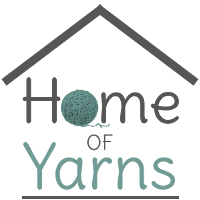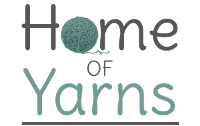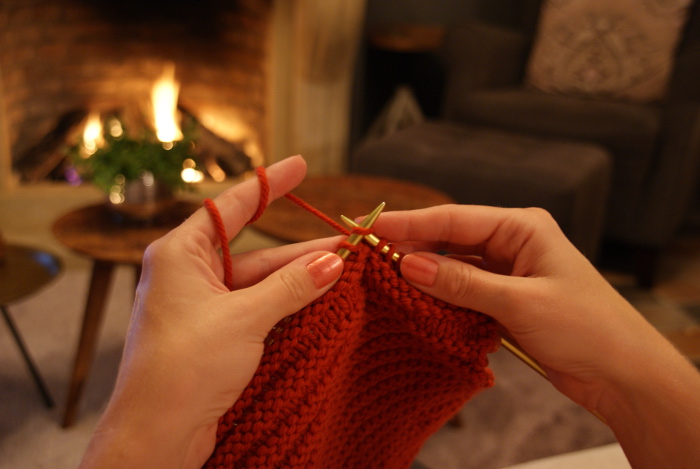Are you learning how to knit and interested in how to hold knitting needles? There a a billion ways to hold those needles and there is not just one right way. You just got to find what works for you. Here is how I hold them.
Knitting style
Since I learned how to knit from my German mother and grandmother, I knit the German way. Also known as Continental or European Style. In Continental knitting, the yarn is held in the left hand. It is a very popular method for fast knitting and it allows for easy switches between knit and purl stitches.
If you would like to know more about the difference between Continental and English style knitting, which is another very popular knitting style, you can read about it here.
How I hold knitting needles
Even within the Continental knitting style, there are many different ways to hold the needles and tension the yarn. I can only tell you what I have learned and what works for me.
I loosely hold the knitting needles and use my left hand to hold the yarn. I wrap the yarn twice around my left index finger and let it slide loosely around it while I am knitting. If you wind your yarn to tight around your finger, it will not slide (and your finger will be unhappy with you).
I extend my left index finger – but not completely stretch it – to create a bit of tensioned yarn to work in. I personally like this bit of tensioned yarn to be longer than I have seen other knitters do. This way I can easily pick the yarn with the point of my right knitting needle to pull up loops.
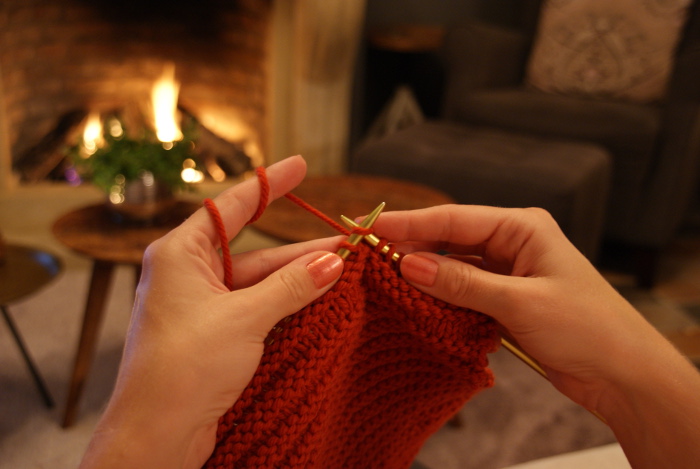
Yarn tension
To control the tension of the yarn, I need to control how easily the yarn slides around my index finger. It depends on how thick and smooth the yarn is how much of a brake I need to get the tension I want.
I usually control my yarn tension by letting the yarn leave my hand in between my ring and little finger. I simply close my little finger to my ring finger to brake and increase tension and let it hang down to decrease tension. Thin yarn slips through my fingers more easily than thick yarn and I sometimes need to increase the brake by wrapping the yarn once around my little finger.
Avoid clenched fingers
Try not to curl up your little (and ring) finger as you would to close your hand to a fist. Holding the yarn that way is an excellent brake, but it can cause tension in the muscles of your hand and you might soon end up with knitting pain. It is best to teach yourself right away to ‘free’ these fingers, as it is more comforable and relaxed for your hands on the long run.
Knitting movements
My hand positions remain pretty much the same while knitting the knit stitch, but for the purl stitch I use my left middle finger to push the yarn over the needle. This is another reason why I need my left ring and little finger to be uncurled and free, so these fingers can hold the needle when my middle finger is occupied.
To avoid stitches slipping of the tops of the needles I lay a finger on the top stitches. For holding these stitches, I use the topmost available fingers. With my right hand, I use my index finger. With my left hand, I use my middle finger as my index finger is extended to hold the yarn.
Since my middle finger is involved in making purl stitches, I do lift that finger of the top stitches and then return. While my middle finger is lifted, my other fingers must keep the stitches in place from further away.
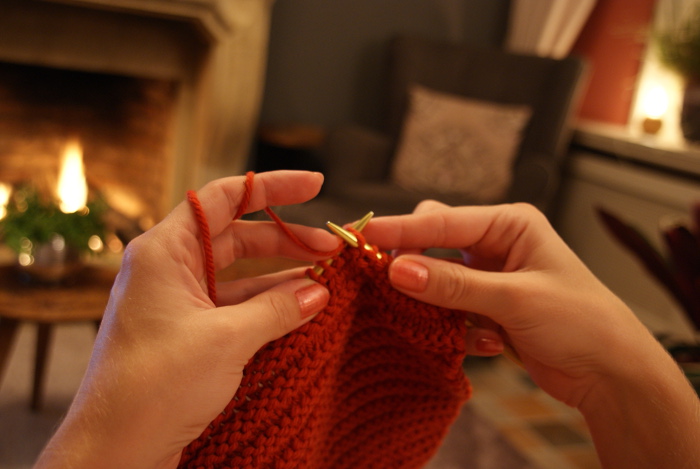
Knitting questions?
I hope this was helpful for you as you learn how to hold knitting needles. Did I forget something? Please, ask me about it. I might be able to tell you more.
